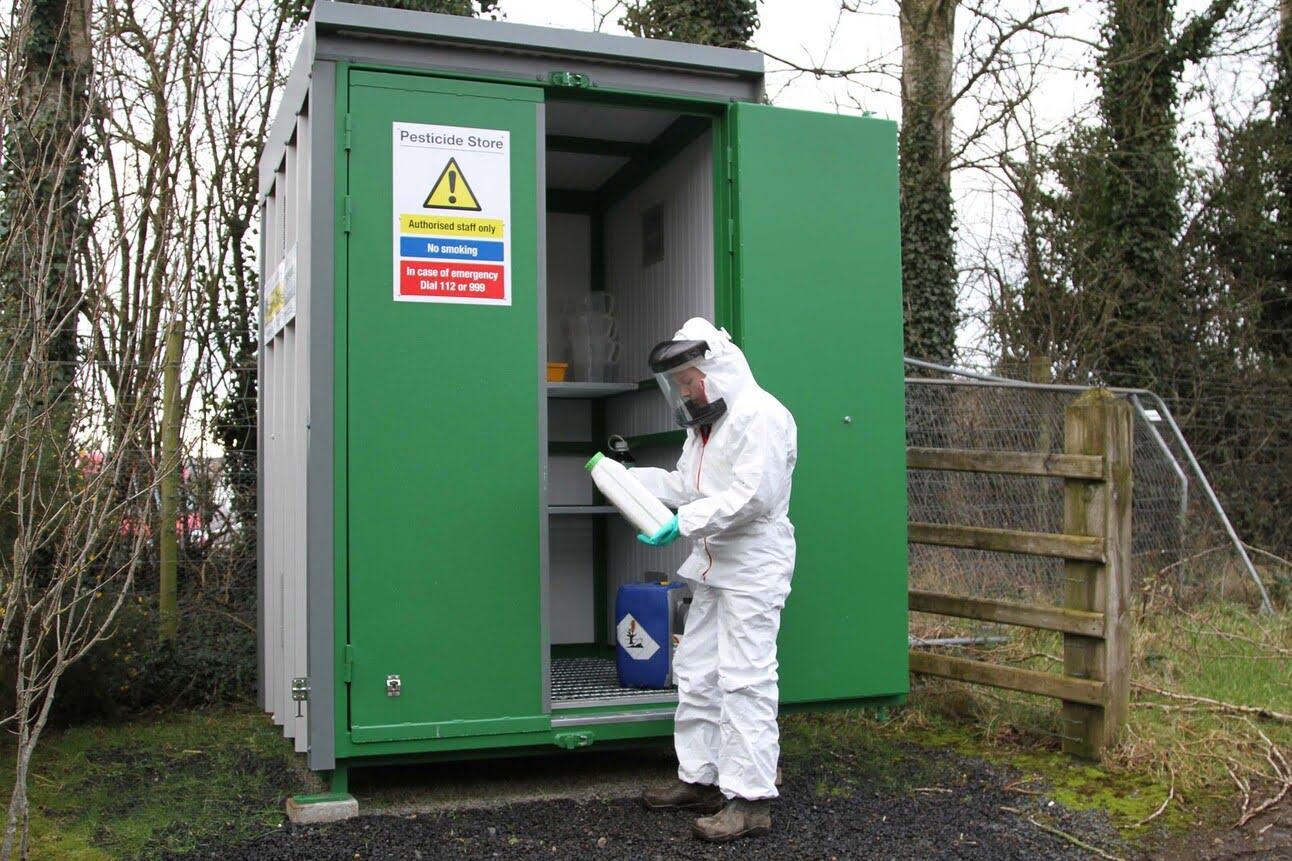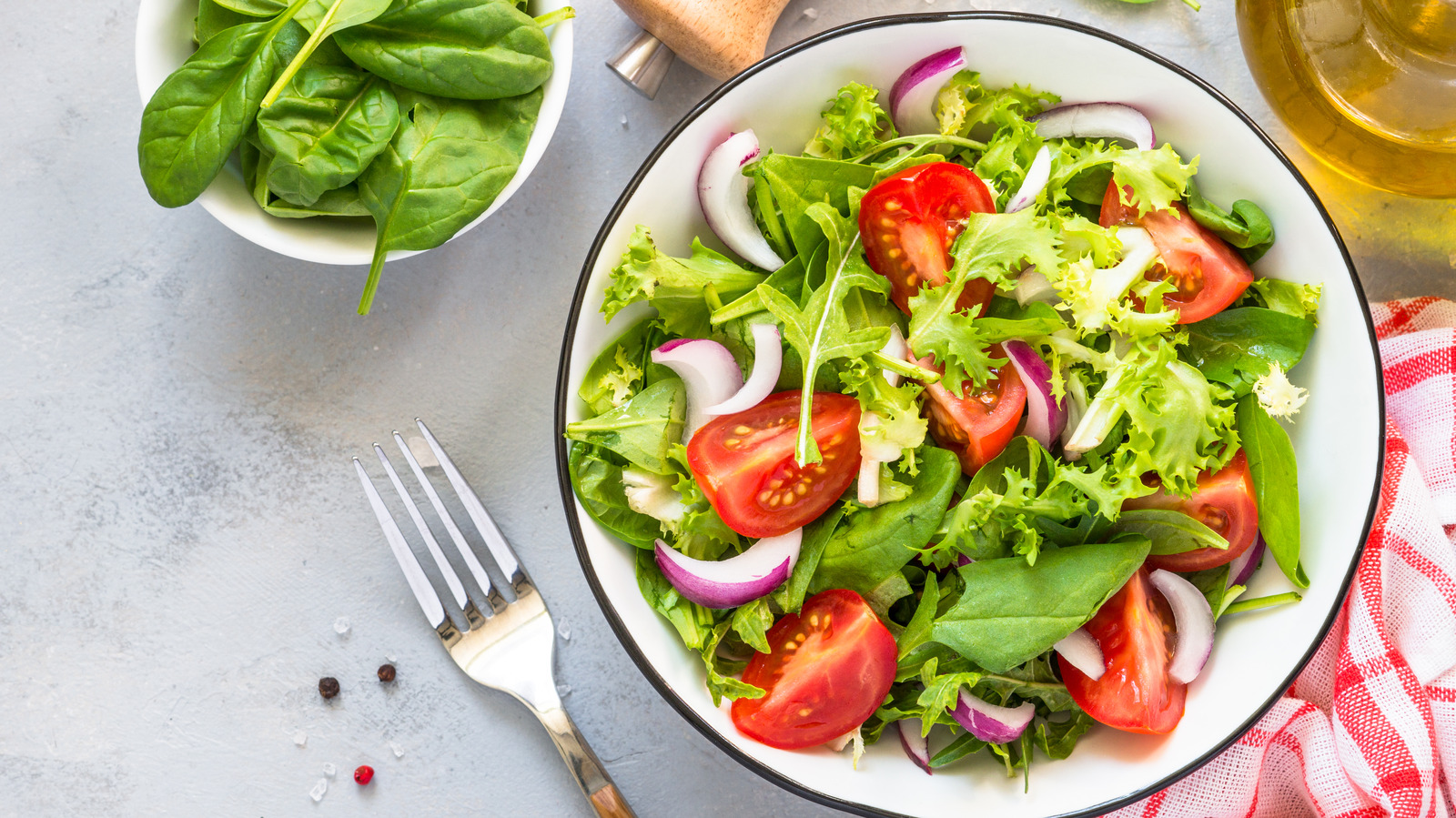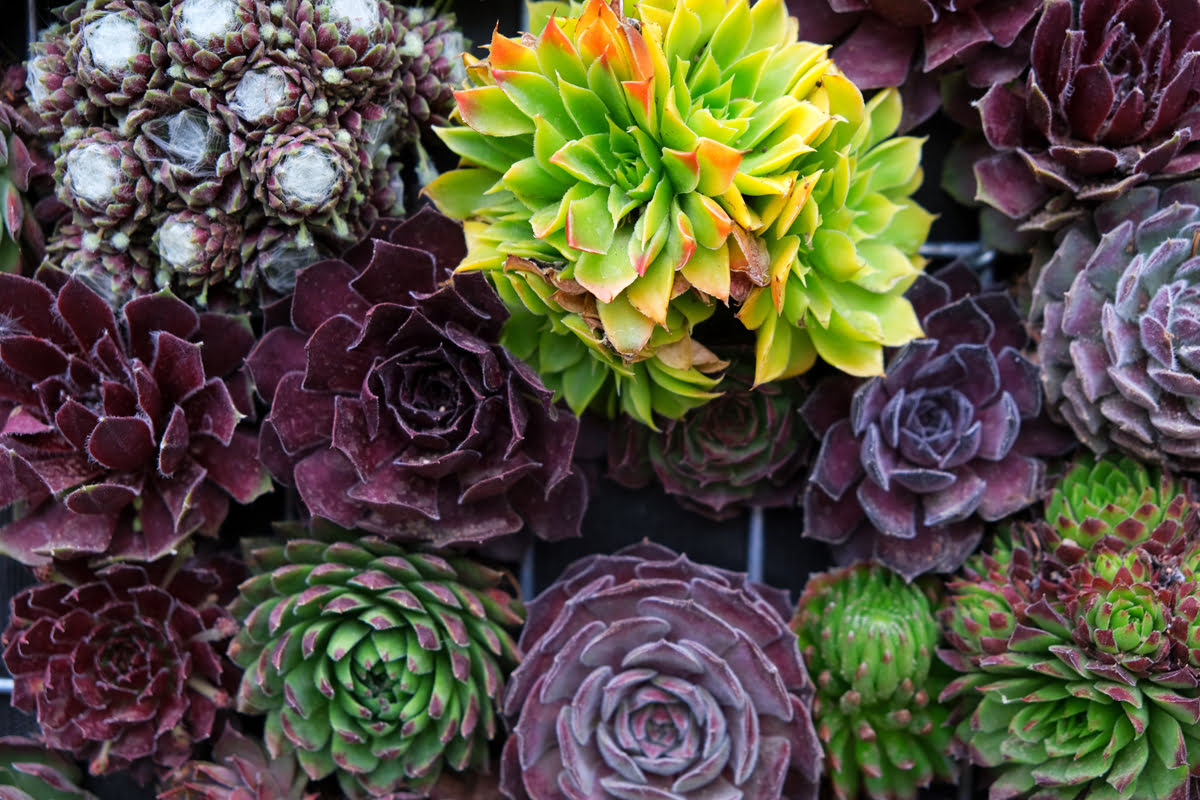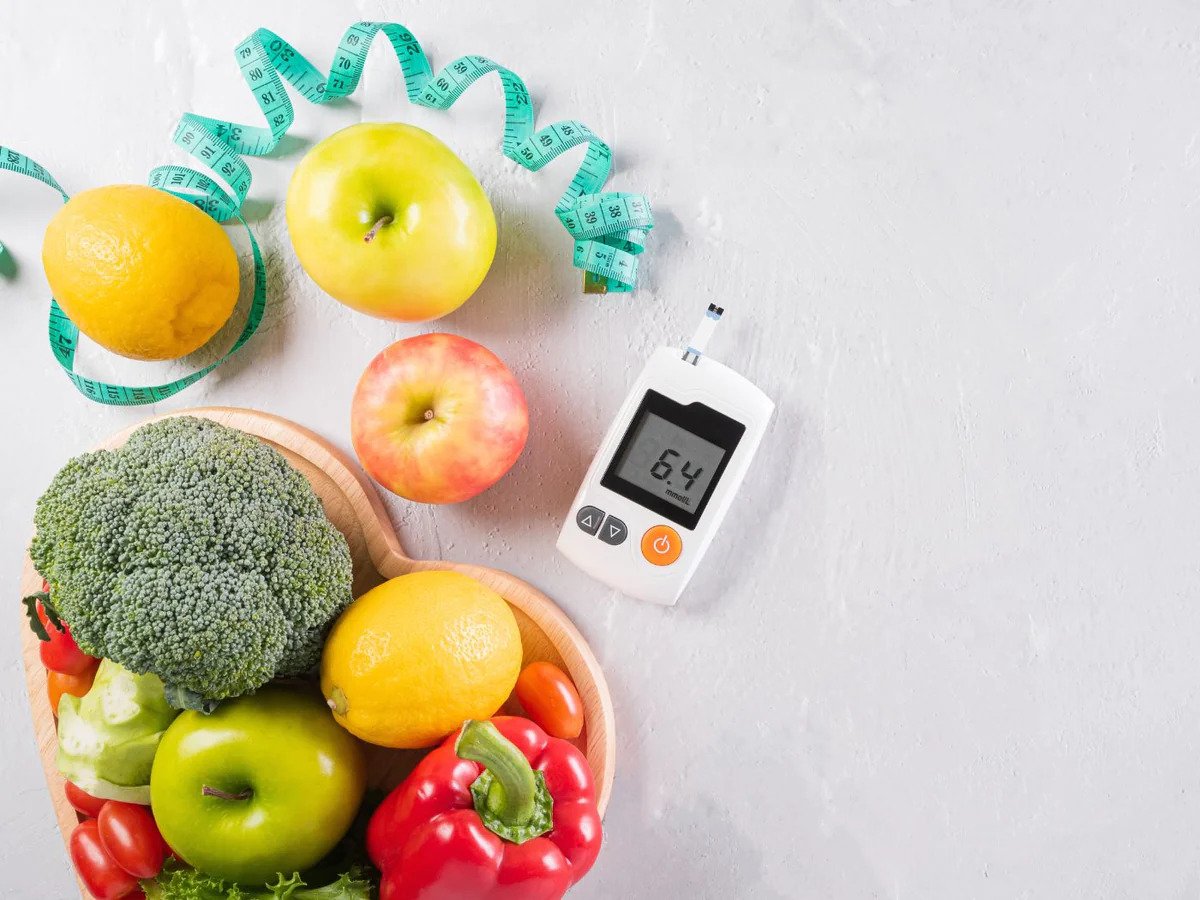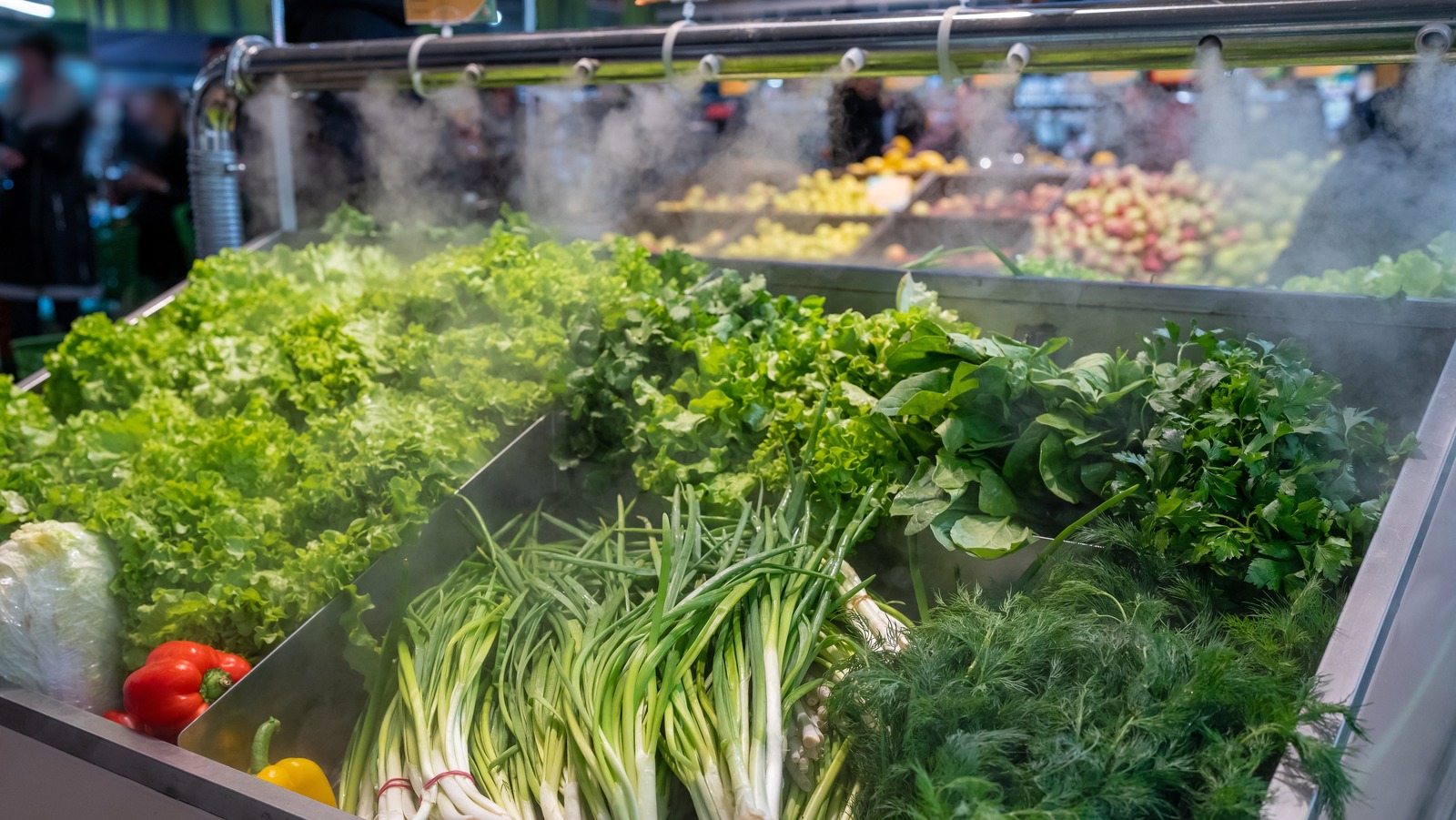Home>Gardening News and Trends>Latest News>What Temperature Should Vegetables Be Stored At


Latest News
What Temperature Should Vegetables Be Stored At
Modified: January 22, 2024
Learn about the ideal storage temperature for vegetables and keep your produce fresh! Get the latest news on proper vegetable storage temperatures here.
(Many of the links in this article redirect to a specific reviewed product. Your purchase of these products through affiliate links helps to generate commission for Chicagolandgardening.com, at no extra cost. Learn more)
Table of Contents
Introduction
Proper temperature control is essential for maintaining the freshness, taste, and nutritional value of vegetables. Whether you are a home gardener or a professional in the food industry, understanding the optimal storage temperature for different types of vegetables is crucial to ensure their quality and extend their shelf life. Vegetables are highly perishable and sensitive to temperature fluctuations, which can accelerate spoilage and lead to nutrient loss.
By storing vegetables at the right temperature, you can preserve their flavor, texture, and nutrients for longer periods, minimizing waste and maximizing their nutritional value. The ideal storage temperature for vegetables depends on their specific characteristics and requirements, such as their moisture content, sensitivity to cold or heat, and ethylene production.
In this article, we will explore the importance of proper temperature control for vegetable storage, discuss the recommended storage temperatures for different types of vegetables, delve into the factors that affect vegetable storage temperatures, provide tips for storing vegetables at the right temperature, and highlight common mistakes to avoid. By understanding and implementing the best practices for vegetable storage temperature, you can enjoy fresh and flavorful produce that contributes to a healthy lifestyle.
Importance of Proper Temperature for Vegetable Storage
Proper temperature control is crucial for vegetable storage as it plays a significant role in preserving their freshness, flavor, and nutritional value. Vegetables are living organisms, and their respiration rates are affected by temperature. If stored at the wrong temperature, vegetables can undergo accelerated deterioration, leading to loss of quality, nutrients, and overall appeal.
One of the main reasons why temperature is important in vegetable storage is to slow down the enzymatic activity, respiration, and microbial growth. Vegetables continue to respire after they are harvested, consuming oxygen and releasing carbon dioxide and heat. Maintaining a cool temperature slows down the respiration process, reducing the rate of quality deterioration and extending shelf life.
Additionally, temperature affects the production and activity of enzymes that can lead to textural changes, discoloration, and nutrient loss. For instance, storing vegetables like lettuce, spinach, and broccoli at temperatures above their recommended levels can result in wilting or yellowing due to increased enzymatic activity.
Furthermore, some vegetables are sensitive to ethylene gas, which is a natural plant hormone released by certain fruits and vegetables as they ripen. Ethylene can accelerate the ripening and deterioration of ethylene-sensitive vegetables, such as carrots, cucumbers, and leafy greens. By controlling the temperature, you can minimize the production and exposure of vegetables to ethylene, preserving their quality and freshness.
Proper temperature control not only maintains the physical quality of vegetables but also helps preserve their nutritional value. Many essential vitamins, minerals, and phytochemicals are sensitive to heat and light, and high temperatures can lead to nutrient loss. By storing vegetables at the recommended temperatures, you can retain their vitamins, minerals, and antioxidants, ensuring that they provide the maximum nutritional benefits when consumed.
Overall, maintaining the right temperature for vegetable storage is imperative to slow down deterioration, minimize nutrient loss, and extend shelf life. By doing so, you can enjoy fresh, flavorful, and nutrient-rich vegetables for longer periods, reducing food waste and promoting a healthy lifestyle.
Recommended Storage Temperatures for Different Vegetables
Each type of vegetable has its own ideal storage temperature, which allows it to maintain its optimal freshness and quality. Here are some recommended storage temperatures for different vegetables:
- Leafy Greens: Leafy greens like lettuce, spinach, and kale are best stored at temperatures between 32°F (0°C) and 40°F (4°C). These vegetables are sensitive to cold temperatures, so it’s crucial to avoid freezing them. Place them in a perforated plastic bag or container to maintain humidity and prevent wilting.
- Root Vegetables: Root vegetables such as carrots, beets, and radishes can be stored at temperatures between 32°F (0°C) and 40°F (4°C) with high humidity. Keep them in a cool, dark place or store them wrapped in a damp cloth or in containers with water.
- Cruciferous Vegetables: Cruciferous vegetables like broccoli, cauliflower, and cabbage are best stored at temperatures between 32°F (0°C) and 40°F (4°C). Wrap them in a plastic bag or place them in a perforated plastic bag to maintain humidity.
- Nightshade Vegetables: Nightshade vegetables such as tomatoes, peppers, and eggplants should be stored at slightly higher temperatures between 50°F (10°C) and 55°F (13°C). Avoid refrigerating these vegetables, as it can affect their texture and flavor.
- Onions and Garlic: Onions and garlic prefer cooler temperatures around 32°F (0°C) with low humidity. Store them in a cool, dry, and well-ventilated area to prevent sprouting and decay.
- Cucumbers: Cucumbers are sensitive to ethylene gas and should be stored separately from ethylene-producing fruits. They can be stored at temperatures between 45°F (7°C) and 50°F (10°C) with moderate humidity. Avoid storing them in excessively cold temperatures, as it can cause chilling injury.
- Herbs: Fresh herbs like basil, cilantro, and parsley should be stored at temperatures between 32°F (0°C) and 40°F (4°C) with high humidity. You can place them in a glass of water like a bouquet or wrap them loosely in a damp paper towel and store them in a plastic bag.
Remember to check specific recommendations for each vegetable, as the storage temperatures may vary slightly depending on the variety and condition of the produce. By following these recommended storage temperatures, you can ensure that your vegetables stay fresh, flavorful, and full of nutrients for as long as possible.
Factors Affecting Vegetable Storage Temperatures
Several factors can influence the optimal storage temperatures for different vegetables. Understanding these factors is key to maintaining the quality and freshness of your produce. Here are some of the main factors that affect vegetable storage temperatures:
- Moisture Content: The moisture content of vegetables plays a crucial role in determining their ideal storage temperatures. Vegetables with high water content, such as leafy greens and cucumbers, require higher humidity levels to prevent dehydration. On the other hand, root vegetables and onions prefer lower humidity levels to avoid excessive moisture and decay.
- Sensitivity to Cold or Heat: Some vegetables are more sensitive to cold temperatures, while others are more sensitive to heat. For instance, leafy greens, tender herbs, and nightshade vegetables like tomatoes and peppers can be damaged by exposure to extremely cold temperatures and should be stored above freezing. On the other hand, tropical vegetables like eggplants and tropical fruits prefer warmer temperatures.
- Respiration Rate: Respiration is the process through which vegetables break down carbohydrates to produce energy, leading to heat and moisture loss. Different vegetables have varying respiration rates, which can be influenced by storage temperature. As a general rule, the respiration rate decreases at lower temperatures, slowing down the ripening and deterioration process. Controlling and adjusting the temperature can help extend the shelf life of vegetables.
- Ethylene Production: Ethylene is a natural plant hormone that can accelerate ripening and spoilage in certain fruits and vegetables. Ethylene-producing vegetables like tomatoes, peppers, and avocados can release high amounts of ethylene, which can cause nearby ethylene-sensitive vegetables to deteriorate quickly. It’s important to store ethylene-producing vegetables separately from ethylene-sensitive ones to prevent premature ripening and quality loss.
- Storage Containers and Packaging: The choice of storage containers and packaging materials can also influence the temperature and humidity levels for vegetable storage. Perforated plastic bags or containers can help maintain the right balance of humidity, allowing vegetables to breathe while preventing excessive moisture buildup. Additionally, using opaque containers or wrapping vegetables in dark materials can protect them from light exposure, which can affect their color and nutritional quality.
It’s important to consider these factors when determining the appropriate storage temperature for different vegetables. By understanding the unique characteristics of each vegetable and controlling the storage environment accordingly, you can prolong their freshness and quality, ensuring that they remain delicious and nutritious for a longer period of time.
Tips for Storing Vegetables at the Right Temperature
Proper storage temperature is essential for preserving the quality and freshness of vegetables. Here are some tips to help you store vegetables at the right temperature:
- Know the recommended storage temperature: Familiarize yourself with the optimal storage temperatures for different types of vegetables. Refer to our previous section on recommended storage temperatures or check reliable sources for specific temperature guidelines.
- Use a refrigerator or cold storage area: Most vegetables can be stored in a refrigerator, but be mindful of the temperature settings. Set the refrigerator to the appropriate temperature range for storing fruits and vegetables, usually between 32°F (0°C) and 40°F (4°C).
- Separate ethylene producers and sensitive vegetables: Ethylene-producing vegetables, such as tomatoes and peppers, should be stored separately from ethylene-sensitive vegetables to prevent premature ripening and quality loss.
- Store leafy greens in perforated bags: To maintain humidity without causing excess moisture, store leafy greens like lettuce and spinach in perforated plastic bags or containers. This helps prevent wilting and maintains freshness.
- Avoid excessive cold or heat: Some vegetables are sensitive to cold and may suffer from chilling injury if stored below their recommended temperature range. On the other hand, avoid storing vegetables in environments that are too warm, as this can accelerate spoilage and nutrient loss.
- Check and remove spoiled vegetables: Regularly inspect your stored vegetables and remove any that show signs of spoilage or decay. This prevents the spread of rot and preserves the quality of the remaining produce.
- Consider alternative storage methods: Not all vegetables require refrigeration. For example, onions and garlic prefer cool, dry locations, while potatoes should be stored in a cool, dark, and well-ventilated area. Learn about the specific storage requirements of each vegetable and adjust accordingly.
- Avoid washing before storage: Unless they are noticeably dirty, it’s best to avoid washing vegetables before storing them. Excess moisture can lead to deterioration and mold growth. Instead, wash them just before using.
- Use proper storage containers: Choose appropriate storage containers that allow for proper ventilation and moisture control. Perforated bags, breathable containers, and airtight containers can help maintain the right humidity levels for different vegetables.
By following these tips, you can ensure that your vegetables are stored at the right temperature, preserving their freshness, flavor, and nutrients. Remember to regularly check and adjust the storage conditions based on the specific needs of each vegetable to extend their shelf life and minimize food waste.
Common Mistakes to Avoid in Vegetable Storage Temperature
Proper temperature control is crucial for vegetable storage, but there are some common mistakes that people often make. By avoiding these mistakes, you can ensure that your vegetables stay fresh and flavorful for longer. Here are some common mistakes to avoid in vegetable storage temperature:
- Storing all vegetables at the same temperature: Different vegetables have different temperature requirements. Storing all vegetables at the same temperature can lead to premature spoilage or loss of quality. Familiarize yourself with the recommended storage temperatures for each type of vegetable and adjust accordingly.
- Exposing vegetables to fluctuating temperatures: Fluctuating temperatures can accelerate the deterioration of vegetables. Avoid placing vegetables in areas with frequent temperature changes, such as near ovens, stoves, or open windows. Keep them in a stable storage environment to maintain their quality.
- Storing vegetables in plastic bags without airflow: While plastic bags can help maintain humidity, sealing vegetables in airtight bags without any airflow can lead to excess moisture buildup and promote spoilage. Instead, use perforated bags or containers that allow for proper airflow and moisture control.
- Storing vegetables that produce ethylene near ethylene-sensitive vegetables: Ethylene gas can cause accelerated ripening and spoilage in certain fruits and vegetables. Avoid storing ethylene-producing vegetables, such as tomatoes and avocados, near ethylene-sensitive vegetables like carrots and cucumbers. This can help prolong the freshness of both types of vegetables.
- Not checking and removing spoiled vegetables: One rotten vegetable can quickly spoil the rest. Regularly inspect stored vegetables for signs of spoilage or decay. Remove any spoiled vegetables immediately to prevent the spread of mold or bacteria.
- Storing vegetables with strong odors together: Some vegetables, like onions and garlic, can release strong odors that can taint the flavor of other vegetables. Avoid storing vegetables with potent odors together to maintain their individual flavors.
- Ignoring the storage requirements of specific vegetables: Each vegetable has its own unique storage requirements. Ignoring or neglecting these requirements can lead to quality deterioration. Take the time to learn about the specific needs of each vegetable and store them accordingly.
- Not adjusting storage conditions for seasonality: Temperature requirements may vary based on the season and climate. For example, during the summer months, you may need to adjust the temperature slightly lower to compensate for higher ambient temperatures. Stay mindful of seasonal temperature fluctuations to maintain optimal storage conditions.
By avoiding these common mistakes, you can ensure that your vegetables are stored at the right temperature, preserving their freshness, nutritional value, and taste. Take the time to understand the specific needs of each vegetable and establish proper storage practices to maximize the shelf life of your produce.
Conclusion
Proper temperature control is paramount for the storage of vegetables, as it directly impacts their freshness, flavor, and nutritional value. By understanding the recommended storage temperatures for different types of vegetables and considering factors such as moisture content, sensitivity to cold or heat, respiration rate, ethylene production, and storage containers, you can ensure that your vegetables stay fresh and appealing for as long as possible.
Storing vegetables at the right temperatures slows down deterioration, preserves nutrients, and extends their shelf life. It is essential to be aware of the specific temperature requirements of each vegetable and adjust storage practices accordingly. Avoiding common mistakes such as storing all vegetables at the same temperature, exposing them to fluctuating temperatures, using improper storage containers, or neglecting spoiled vegetables can help maintain the quality and increase the longevity of your produce.
By implementing proper temperature control in vegetable storage, you can reduce food waste, save money, and enjoy the maximum nutritional benefits from your fresh produce. Whether you are a home gardener or a professional in the food industry, paying attention to temperature is key to ensuring that your vegetables remain flavorful, nutrient-rich, and contribute to a healthy diet.
So remember, store your leafy greens in perforated bags, separate ethylene producers from sensitive vegetables, check and remove spoiled vegetables regularly, and adjust storage conditions based on the specific needs of each vegetable. By doing so, you are well on your way to creating a sustainable and efficient vegetable storage system that preserves their quality and allows you to enjoy fresh and delicious produce for an extended period.

